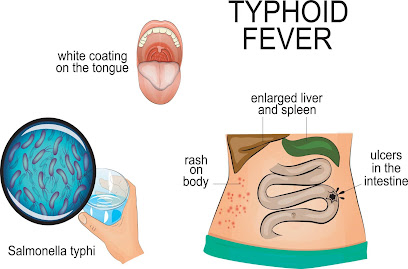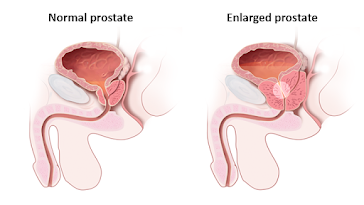Typhoid: What It Is, Symptoms, Causes, and Prevention
Typhoid fever is defined as a bacterial infection caused by bacteria Salmonella typhoid. The infection is caused primarily through ingestion of contaminated water and food, but it can also spread through close contact from one person to another. Interestingly, animals don’t carry this disease, so transmission is only possible through consumption of contaminated food/water and from human to human. The bacteria enter the body through the mouth and spend one to three weeks in the intestine prior to reaching the bloodstream.
Although everyone can develop typhoid, children are at a higher risk than adults despite having milder symptoms. The most common risk factors for typhoid fever include drinking contaminated water, having close contact with the infected individual, working with bacteria that cause the infection, and working or traveling to high-risk areas. The infection causes a number of symptoms but with prompt treatment patients notice improvements within seven to 10 days. The primary treatment route is an intake of antibiotics.
What are the signs and symptoms of typhoid fever ?
It can take a week or two after infection for symptoms to appear. Some of these symptoms are:
- high fever
- weakness
- stomach pain
- headache
- poor appetite
- rash
- fatigue
- confusion
- constipation, diarrhea
- Serious complications are rare, but can include intestinal bleeding or perforations in the intestine. This can lead to a life-threatening bloodstream infection (sepsis). Symptoms include nausea, vomiting, and severe abdominal pain.
Other complications are:
- Pneumonia
- Kidney or bladder infection
- Pancreatitis
- Myocardium
- Endocarditis
- Meningitis
- Delirium, hallucinations, paranoid psychosis
If you have any of these symptoms, tell your doctor about recent travels outside the country.
Its main method of transmission is the oral-fecal route, generally spreading in contaminated water or food. It can also be passed through direct contact with an infected person.
In addition, there are a small number of people who recover but still carry S. typhoid. These “carriers” can infect others.
Some regions have a higher incidence of typhoid. These include Africa, India, South America, and Southeast Asia.
Worldwide, typhoid fever affects more than 26 million people per year. The United States has about 300 cases per year.
Typhoid fever is a life-threatening infection caused by the bacterium Salmonella Typhi. It is usually spread through contaminated food or water.
An estimated 11–20 million people get sick from typhoid and between 128 000 and 161 000 people die from it every year.
Symptoms include prolonged fever, fatigue, headache, nausea, abdominal pain, and constipation or diarrhea. Some patients may have a rash. Severe cases may lead to serious complications or even death.
Typhoid fever can be treated with antibiotics although increasing resistance to different types of antibiotics is making treatment more complicated.
Typhoid fever is a life-threatening infection caused by the bacterium Salmonella Typhi. It is usually spread through contaminated food or water. Once SalmonellaTyphi bacteria are eaten or drunk, they multiply and spread into the bloodstream.
Urbanization and climate change have the potential to increase the global burden of typhoid. In addition, increasing resistance to antibiotic treatment is making it easier for typhoid to spread through overcrowded populations in cities and inadequate and/or flooded water and sanitation systems.
Improved living conditions and the introduction of antibiotics resulted in a drastic reduction of typhoid fever morbidity and mortality in industrialized countries. In developing areas of Africa, the Americas, South-East Asia and the Western Pacific regions, however, the disease continues to be a public health problem.
WHO estimates the global typhoid fever disease burden at 11-20 million cases annually, resulting in about 128 000–161 000 deaths per year.
Typhoid risk is higher in populations that lack access to safe water and adequate sanitation. Poor communities and vulnerable groups including children are at highest risk.
So What's The Way Forward Now?
In the case of typhoid antibiotics has always been the first aid to battle the disease cause by Salmonella Typhi. but the truth is it does not eliminate the diseases permanently, but rather gives some kind of relief making you forget the pains you went through. So after some time it comes back with higher symptoms. this tells us that antibiotics can't be the final solution.




























